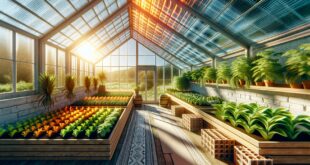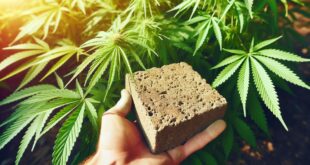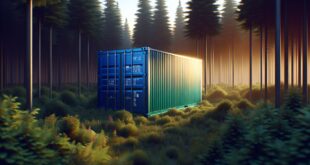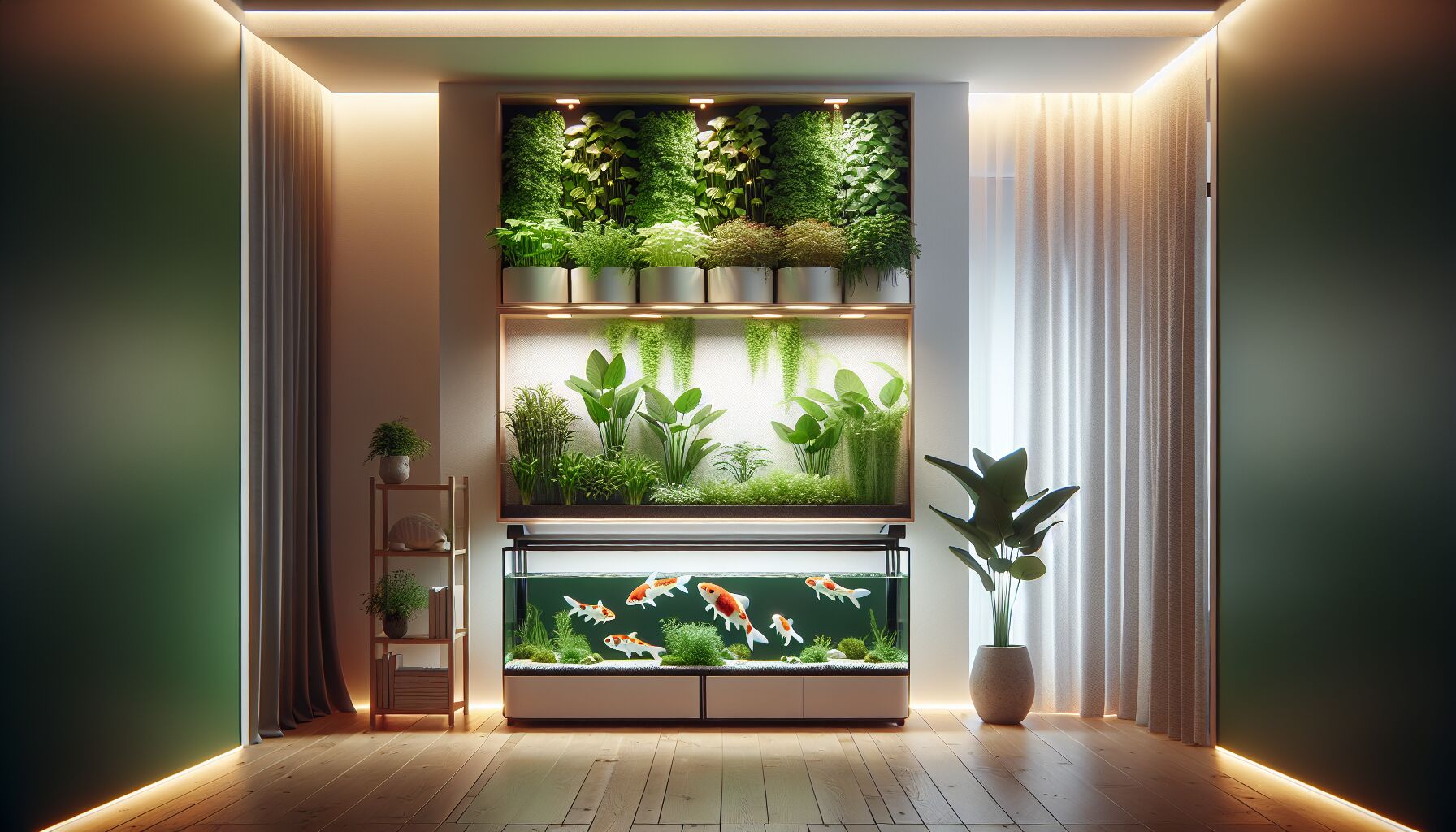 It’s easy to think aquaponics is only for folks with greenhouses or sprawling backyards—but truth be told, you can be raising fish and growing leafy greens in a one-bedroom apartment, if the setup is right. What might look like a science project gone rogue is actually one of the most ancient and elegant systems of sustainable food production. The Aztecs practiced something similar centuries ago, and now it’s quietly making a comeback, right in the heart of urban neighborhoods where soil is scarce and time even scarcer.
It’s easy to think aquaponics is only for folks with greenhouses or sprawling backyards—but truth be told, you can be raising fish and growing leafy greens in a one-bedroom apartment, if the setup is right. What might look like a science project gone rogue is actually one of the most ancient and elegant systems of sustainable food production. The Aztecs practiced something similar centuries ago, and now it’s quietly making a comeback, right in the heart of urban neighborhoods where soil is scarce and time even scarcer.
At its heart, aquaponics marries two symbiotic systems: aquaculture (raising fish) and hydroponics (soilless plant cultivation). The fish produce ammonia-rich waste. Bacteria (the unsung heroes here) convert that waste into nitrates. Plants then absorb the nitrates as nutrients, cleaning the water in the process, which cycles back to the fish—clean. No runoff, no synthetic fertilizer, no big machines humming in the background. Just life feeding life in a rhythm so natural it might make you pause and wonder why this isn’t how we grow most of our food already.
Now, thinking about this thriving mini-ecosystem inside a 600-square-foot apartment might make you raise an eyebrow. But the beauty is in its compact efficiency. Instead of large grow beds, vertical towers or tiered shelf systems hold net cups where basil, lettuce, mint, or even strawberries can flourish. Below these towers or beside them, a small fish tank—anywhere between 10 to 30 gallons—is enough for a few tilapia, goldfish, or koi. With the right balance, it becomes a self-regulating system that requires far less oversight than you’d think. It’s not plug-and-play exactly—but it’s close.
Let me explain how this works practically: a small submersible pump pulls the water from the fish tank up to the plants via plastic tubing. The grow beds—often filled with expanded clay pebbles or lava rocks—filter solids while giving roots room to breathe. After feeding the plants, gravity helps the water return, newly filtered, back to the fish. It’s mostly quiet, except for the soft bubbling of air stones and the occasional ripple when your fish rise up for flakes or pellets.
So, does this actually fit into urban life? Absolutely. Many city dwellers are already experimenting with countertop systems like the Back to the Roots Water Garden, which uses a small betta fish to fertilize microgreens. For those wanting a bit more food security, DIY systems using Rubbermaid tubs, PVC, and grow lights allow expansion within a closet or under a window nook. Especially in colder months, supplemental lighting (look for full-spectrum LEDs) makes year-round produce possible—even in studio apartments that could use a splash of green and quiet vitality.
There’s also a meditative pleasure to observing the cycle. Feeding your fish, tending your greens, watching the tank clear itself like clockwork—this is a kind of slow living nestled in between the chaos of sirens, screens, and commutes. The system asks for your attention, not your perfection. And over time, it becomes a living habit. As Wendell Berry once wrote, “The care of the Earth is our most ancient and most worthy responsibility.” Aquaponics isn’t just about growing food. It’s about reclaiming that duty—quietly, daily, with your own hands.
There’s a subtle but powerful principle at play here: reciprocity. You care for the fish; they nourish the plants. The plants clean the water; the cycle continues. It’s circular like the seasons, and perhaps that’s why it resonates so deeply, especially for those unplugging from industrial food models and seeking something truer. Aquaponics doesn’t need acres. It needs intention, observation, and rhythm.
And don’t let square footage fool you. With careful design, a 2×3-foot system can yield a weekly salad harvest and keep fish healthy year-round. Add hanging lights, a backup battery for the pump, and a simple water testing kit, and you’ve got a fireproof entry point into urban farming that’s as grounded as it is gratifying.
No, it won’t replace every item on your grocery list. But what it grows—it grows well. Better, even. Cleaner. More honest. It invites you closer to your food and your food source closer to home.
If you ask someone who’s had their hands in aquaponics long enough, they’ll tell you: it’s not just about feeding your body. It’s about reorganizing attention. Shrinking the distance between you and the living cycle of your nourishment.
And in concrete jungles lit by neon, that kind of grounding is more than nice—it’s necessary.
Choosing the right fish and plants
Choosing the right fish and plants in a home aquaponics setup isn’t about picking whatever sounds tasty—it’s about selecting species that live well together, adapt to your space, and thrive in your unique urban microclimate. Think of it like matchmaking for a quiet, self-sustaining ecosystem. If you get it right, you won’t just have living décor; you’ll have a highly functional pocket of sustainable food production—right next to your coffee table.
So, where do you begin?
Start with the fish. They’re at the heart of your system—not just swimming around looking pretty (though some of them do)—but producing the nutrients your plants live on. Their health directly affects your greens and herbs, which means consistency beats complexity every time.
If you’re new to urban farming and want something low-maintenance, you’ll probably want to steer clear of sensitive, warm-water species like trout—unless, of course, you’re ready to maintain chillers and fuss with temperature swings. Instead, the tried-and-true heroes of small aquaponics setups look more like this:
- Tilapia: Hardy, fast-growing, forgiving. They’re practically the staple fish of aquaponics because they tolerate a wide range of conditions—and they’re edible. Plus, they’re social and active, which adds a little joy to daily feeding time.
- Goldfish: Great for beginners or non-edible systems, especially in smaller tanks. They produce a solid amount of waste and handle cooler water quite well. Also—they’re remarkably long-lived if cared for properly.
- Koi: These live long and grow large. They’re beautiful, relatively resilient, and often favored more for aesthetics and serenity than food. They’re better for decorative or semi-edible systems.
- Betta fish or guppies: Ideal for ultra-micro setups—think desktop-scale aquaponics. While not ideal for eating, they work well in systems growing microgreens or herbs.
Now, let’s flip to the leafy side of the equation—the plants. Your choice here depends on two things: the nutrient levels you can support and the light conditions in your home. Fast-growing, leafy greens are the most forgiving companions for urban aquaponics. Why? Because they’re nitrogen-hungry and happy in moderate lighting.
A few go-to options that catch the light and give back plenty:
- Lettuce and kale: Uncomplicated, abundant, and quick to harvest. They make excellent first crops and are rarely fussy unless you severely neglect them.
- Basil, mint, and cilantro: Herbs do wonderfully in aquaponics, and the aromatics from mint or basil can actually freshen up your space while you’re at it. A small window box turned aquaponic growbed could keep your kitchen in permanent pesto-mode.
- Swiss chard and arugula: Slightly stronger flavors with beautiful colors. These forge through cooler weather and bounce back quickly when picked properly.
- Cherry tomatoes or strawberries: A little trickier. Fruit-bearing plants need higher nutrient levels and better lighting, but they’re worth it if you’re ready. Full-spectrum LEDs will help here, especially in apartments with limited natural sun.
Fish feed the plants, but the type of plant affects how you manage the system. For instance, heavier feeders (like tomatoes) might require a more robust fish-to-plant ratio—or supplemental nutrients from organic sources like seaweed extract if your fish output can’t keep up. Lighter feeders like lettuce, on the other hand, are incredibly easy-going and make for a low-pressure introduction to aquaponic gardening.
Still, everything’s about balance. If you overstock the tank, you risk ammonia spikes. Underplant the beds? Excess nitrates could build up—stressing your fish. There’s beauty in seeing how your setup communicates imbalance. A yellowing basil leaf could mean low nitrogen. A gasping goldfish might mean oxygen’s running low. When you start to pay attention, the system starts speaking to you.
“Look deep into nature, and then you will understand everything better.” — Albert Einstein
He wasn’t talking about aquaponics specifically—but the principle stands. These systems mirror nature in slow, deliberate cycles. Through observation and adjustment, you learn a little more each week—not just about growing food, but about your own patterns of care, inconsistency, and attention.
Also worth noting: don’t just think in terms of food. Aquaponics can grow medicine too. Gotu kola, ashwagandha, and even holy basil (tulsi) can be adapted to these systems if the pH and temp are right. For those on a path of self-healing or herbal exploration, this expands aquaponics from salad-factory to full apothecary garden.
Choosing the right species isn’t about perfect ratios on paper—it’s about pairing what works in your world. What food supports your body? What temperatures does your space hold naturally year-round? What fish are ethically available where you live?
If you want a bit more structure, platforms like The Aquaponic Source and Sylvia Bernstein’s books give detailed stocking guidelines and plant charts. But don’t be afraid to step off the blueprint a little. The most successful urban farmers are those who listen before they tweak—who experiment with reverence.
Remember: this is more than indoor farming. It’s a mini-sanctuary. One that teaches resourcefulness and reciprocity, week after week. And once that rhythm clicks into gear, choosing your fish and plants becomes less about boxes to check—and more like choosing company for a shared life.
Maintenance tips for healthy systems
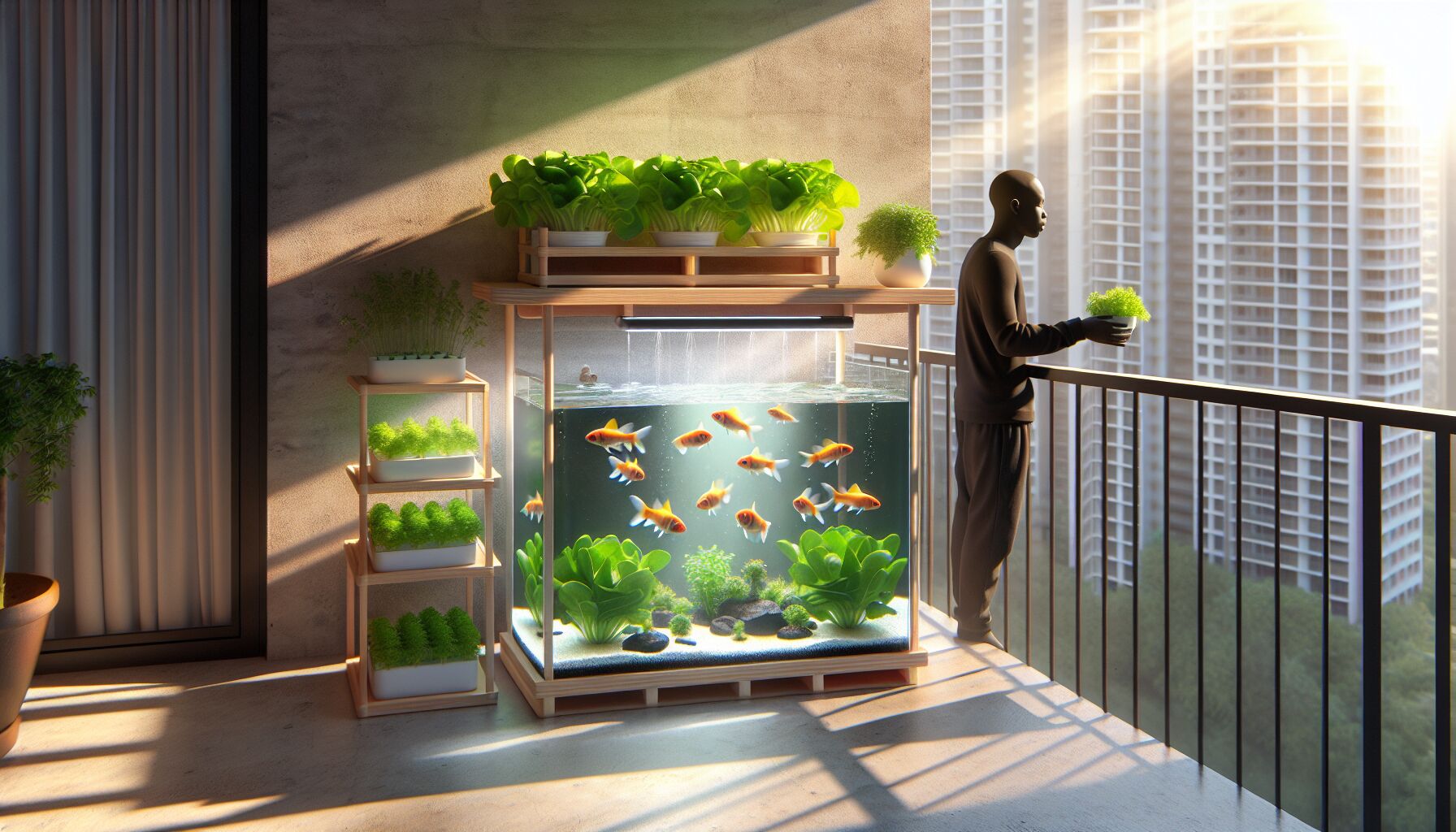 Even the most hands-off aquaponics setup needs regular tending, but here’s the thing: it’s not about constant tinkering. It’s about learning the rhythm of your system—like how a farmer learns the soil or a shepherd listens for shifts in the flock. Maintenance isn’t a burden; it’s a relationship. Give it 10–15 minutes a day and a deeper check once a week, and you’ll avoid 90% of the problems that trip up first-time urban farmers.
Even the most hands-off aquaponics setup needs regular tending, but here’s the thing: it’s not about constant tinkering. It’s about learning the rhythm of your system—like how a farmer learns the soil or a shepherd listens for shifts in the flock. Maintenance isn’t a burden; it’s a relationship. Give it 10–15 minutes a day and a deeper check once a week, and you’ll avoid 90% of the problems that trip up first-time urban farmers.
Let’s start practical.
Water quality is absolutely everything. This isn’t just a tank of fish or a bin of lettuce. It’s one living, breathing loop. The balance of ammonia, nitrites, and nitrates cycles invisibly—until it doesn’t. That’s when your fish start gasping or your leaves curl unnaturally. But with steady eyes and a simple test kit (API’s Freshwater Master Kit is solid), you can stay ahead. Test pH, ammonia, and nitrate levels at least once a week. Even seasoned growers keep a log, especially when seasons change and water temps bob up or down.
“An ounce of prevention is worth a pound of cure,” Ben Franklin said—and in aquaponics, it might be worth a whole tank’s survival.
Here’s a clear rhythm to get into:
1. Daily: Feed your fish—appropriately. Overfeeding is the top rookie mistake, spiking ammonia and choking the plants. A good rule of thumb? Only feed what they’ll eat in a couple of minutes. While you’re there, check that the water’s moving, the pump’s humming gently, and the plants are upright and happy. Listen—literally. Unusual pump noises, splashy sputters, or super-quiet cycles often hint at early issues.
2. Weekly: Test water. Check plant growth. Trim dead leaves. Rinse filters if you notice reduced flow. If you’re using grow media like expanded clay, glance under for clogs. Look at fish behavior—are they darting around or hanging low and sluggish? Subtle shifts are clues. Change out 10% of the water if levels are off. Use dechlorinated or aged water, especially in city settings.
3. Monthly: Clean the pump housing and tubing lightly. Nothing aggressive—just a soft brush and warm water. Muck and biofilm build slowly, and they can slow water flow or disrupt oxygenation. Also take stock: is your system balancing inputs and outputs? Too much algae or a greenish tint? Possibly too much light or excess nutrients. Murky water means you’re missing a sign the system’s been whispering for a while.
4. Every few months: Trim root systems if they’re clogging the flow. Roots on happy plants can sometimes invade the plumbing itself, especially in raft systems. Rotate or replant crops to balance nutrient demands. Consider introducing a few red wigglers (composting worms) into your grow bed—they break down excess solids and help aerate your medium.
Oxygen is another overlooked key. Healthy fish need it. Healthy bacteria need it, too. If the water feels still, or fish gulp at the surface, you may need a boost. A basic air stone or bubbler—about $10 online—can save your whole setup from collapsing. Some swear by “venturi” injectors to oxygenate passively through water flow, but for most small urban farming setups, keep it simple. You’re not running a commercial hatchery.
Let’s not forget the plants. While they’re less demanding than fish, they communicate just as clearly—if you’re watching. Yellowing leaves often point to nitrogen deficiency. Purpling? Could be phosphorus. Curling or stunted leaves? Look at your light source or pH level. If you’re growing in winter, your tomatoes might scream silently for more lumens, not more nutrients. That full-spectrum light you installed? Make sure it’s close enough and on long enough—12–14 hours if needed.
As for pests—yes, they still find their way in, even indoors. Aphids, spider mites, and fungus gnats can sneak into even the cleanest balcony setup. The trick is to catch them early. Neem oil works well and won’t wreck your system balance if used sparingly. For more persistent problems, consider beneficial insects like ladybugs or parasitic wasps—not for everyone, but for the spiritually patient, it’s a delight to watch regeneration at work.
And remember, aquaponics isn’t just a method—it’s a teacher. When something goes “wrong,” it’s usually a missed message. Root rot means too much water, poor airflow, or improper media. Ammonia spikes? Probably overfeeding or a fallen leaf decaying out of sight. These aren’t failures—they’re feedback loops trying to guide you to equilibrium.
This kind of care work is undervalued in modern settings. We’ve been trained to expect instant results, optimized growth curves, precision automation. But maintenance in a living system isn’t about control—it’s about rhythm, and noticing. Like tending a fire or managing a sourdough starter, the effort is part of the relationship. That familiarity, that rhythm—that’s what keeps it alive.
If you’re wiring everything to a timer and plugging it into smart-home dashboards, that’s fine. Just make sure it doesn’t replace your hands, your eyes, or your trust in experience. No sensor will tell you what a human eye and a quiet heart can perceive from slight wavering leaves or curious fish shifting moods.
For power outages—because they’re more common than folks expect—keep a backup battery-powered air pump on hand. Even a few hours without oxygen can decimate your microbial bacteria, which throws the entire balance off. The system may look simple from the outside, but biologically? It’s layered and sensitive.
One more thing: stay present. Sit next to your system now and then with a mug of tea. Watch how it breathes, how it slows you down. This is the quieter side of urban farming. Not chasing yield, but learning to sense vitality through observation. Maintenance then becomes more than checking boxes—it becomes care, ceremony, a form of prayer in motion.
Aquaponics maintenance isn’t a checklist—it’s a lifestyle of noticing. One that rewards presence over perfection. And in an age where so much food is handled by distant machines and hidden labor, bringing this process into the home is a quiet act of reconnection. Not only with food, but with the cycles we’re all still part of, whether we notice or not.
 DS Haven In Light Of Things
DS Haven In Light Of Things

